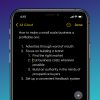You’ve probably been using the same iOS keyboard for years. Unless you want the unstimulated monotony to be continued, It’s time to look out for some alternatives. So, here’s me comparing Google’s Gboard vs iOS Keyboard for you.
By the end of this comparison, you’ll know which is the best iOS keyboard out of the two. But first, answer this:
What’s the purpose of a keyboard?
It’s a weird question, at a glance, to answer. Yet if we were to enhance the question a bit and ask “What’s the primary purpose of a keyboard?” we would have an immediate response. It’s, of course, to type.
Over the course of time, keyboards have evolved from being embedded into a mechanical housing to a virtually enclosed form built for enhancing communication through the convenience of smartphones. At the very core, however, a keyboard is just a pawn. An instrument. An instrument you use to produce the music, which is what ultimately matters.
The default iOS keyboard, in that sense, is immensely prosperous in producing the music while Google’s GBoard shifts your focus more towards handling the instrument. And that’s why I prefer (and like) the default iOS keyboard better. I have my reasons, which I’ll try to prove, objectively, or subjectively.
But you may as well keep in mind that when it comes to keyboard preferences, choices matter from person-to-person. Everyone has different keyboard needs. It may sound strange but it’s the truth that some might love just the design, some the extensive features, and some might just focus on typing.
If you’d want to name it, you can name this post as a “Gboard VS iOS Keyboard Comparison” and I wouldn’t refuse.
Gboard vs iOS Keyboard: Typing
Google has done an impressive job perfecting its keyboard for iOS over the years since its introduction. It’s the first choice for most people owning an iPhone today; especially Android converts.
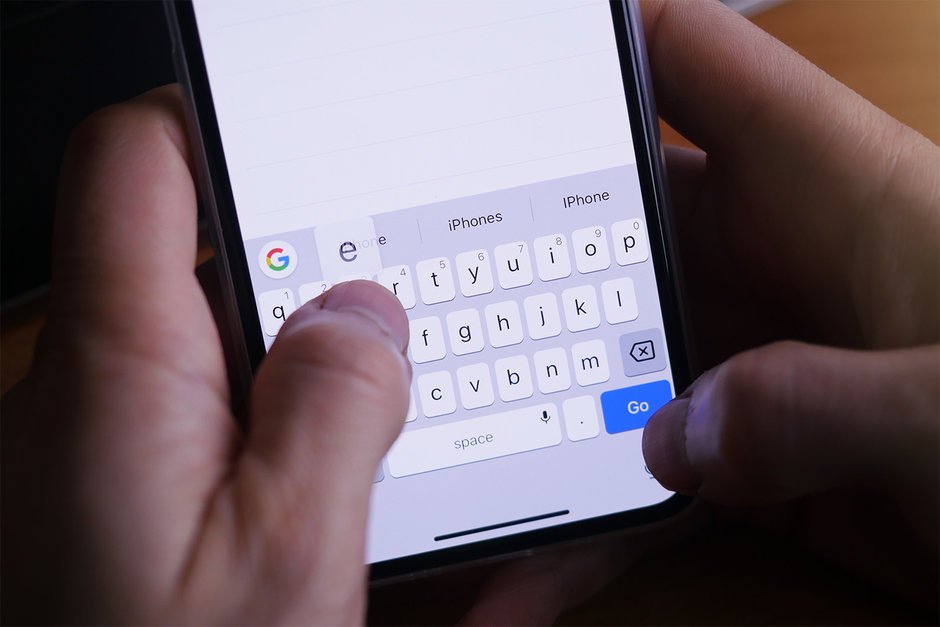
That is not to say it hasn’t had a rough history with iOS with all the lagging and crashing. Albeit, with evolving updates to both iOS and Gboard, the keyboard has improved and now it’s on par with the default one.
However, Google’s keyboard still fares worse in terms of accuracy when it comes to typing as opposed to the default iOS keyboard.
Sure, Gboard has swipe functionality which makes typing with one hand easier. But it doesn’t fare well, at all, when it comes to typing with both hands. And it has something to do with a common keyboard concept called “key travel.” Gboard’s keys are packed in so close to each other, that typing normally with two hands results in unlimited typos, which, Google’s autocorrect mostly fails to fix.
That is not to say that Google’s autocorrect is any less than Apple’s, but with the better key travel, I think the default iOS keyboard has the upper hand here.
The default iOS keyboard, in that sense, is immensely prosperous in producing the music while Google’s GBoard shifts your focus more towards handling the instrument.
Imperfect key travel aside, using emojis via Gboard is also a bit flaky and demanding. On the default iOS keyboard, you tap the emoji icon and get a humbling list of emojis.
Google’s keyboard works with emojis in the same way. But the damning frustration ensnares when you try searching for new emojis (not selecting, but searching). But before we go further learning how each keyboard handles emojis, it’s important to know how they work differently.
On Gboard, you have to explicitly search for an emoji, select from the results, and send it to the other side. In iOS, you type naturally and when you come across a word that matches an emoji, it will show in the autocomplete suggestion area. Tapping the emoji from the suggestions will either substitute the word or append it beside the word in the text field.
The point is, however, Google’s keyboard takes four taps for a function that iOS’ default keyboard runs in one tap. And while having a heated text conversation, those four taps will want you to dump your phone in the toilet and flush it right away. Albeit, in its own way, iOS’ default keyboard makes you feel the same. Since you don’t have search functionality for emojis and the system is entirely based on suggestions that only show up when you type the exact words associated with the emoji, at least for me, the keyboard sometimes (and it’s rare) doesn’t find the one I intend to look for unless I manually scroll through the seemingly massive list.
The point is, however, Google’s keyboard takes four taps for a function that iOS’ default keyboard runs in one tap.
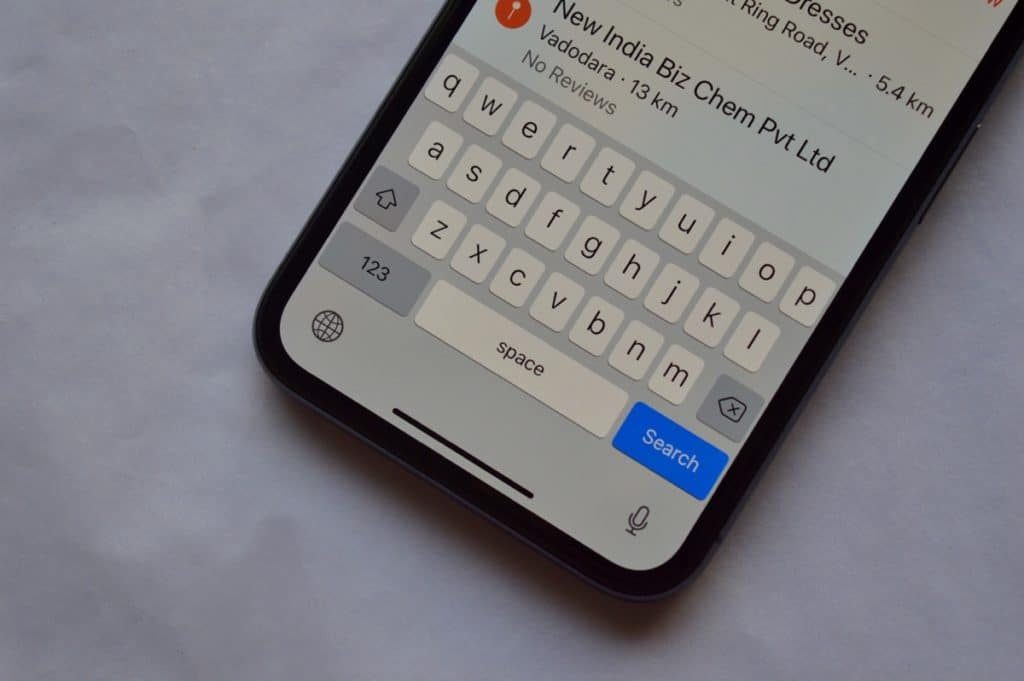
Although, what these keyboards lose in emoji, make up for it in one-handed typing. For starters, Gboard has swipe functionality which is a major help while you’re vigorously typing. It also has a one-sided keyboard feature which shifts the keyboard to fit one side of the screen. This feature, however, is most beneficial to users with phones that have huge screens so that they can easily type with just one hand.
Swipe functionality aside, the default iOS keyboard also has the same one-handed typing feature, which by the way, is much more pleasant to type on due to the adequate key travel. You know what?
The default iOS keyboard is also purported to gain swipe functionality with iOS 13, according to a Bloomberg report. Taking this into consideration, if the rumors turn out to be true in June, there won’t much leverage left to use Google’s keyboard when arguing which one types better.
Moving on…
Gboard vs iOS Keyboard: Features
Gboard is probably the only keyboard which has almost all features built in. It has swipe functionality, haptic feedback, 3D touch support to move the cursor between sentences, multiple theme support, and built-in GIF support.
Well, these are only the basic ones. Delving into the craziness of Google’s keyboard, you get Google search, native YouTube video sharing, Google’s translate in the keyboard itself, and more.
In comparison, the native iOS keyboard has nothing worth showing off right out of the box. However, the crazy features like Google search and YouTube video sharing are peripheral features that contain little significance while having a daily life chat conversation. Yes, sometimes you need to share a quick link to a new Zayn Malik music video, but it’s far from your regular function. Although, it’s convenient. If you, however, need to share a YouTube video via the default keyboard, you will have to copy and paste the link from the YouTube app (Plus point: iMessage has an addon that lets you share YouTube videos in the same way Google’s keyboard does).
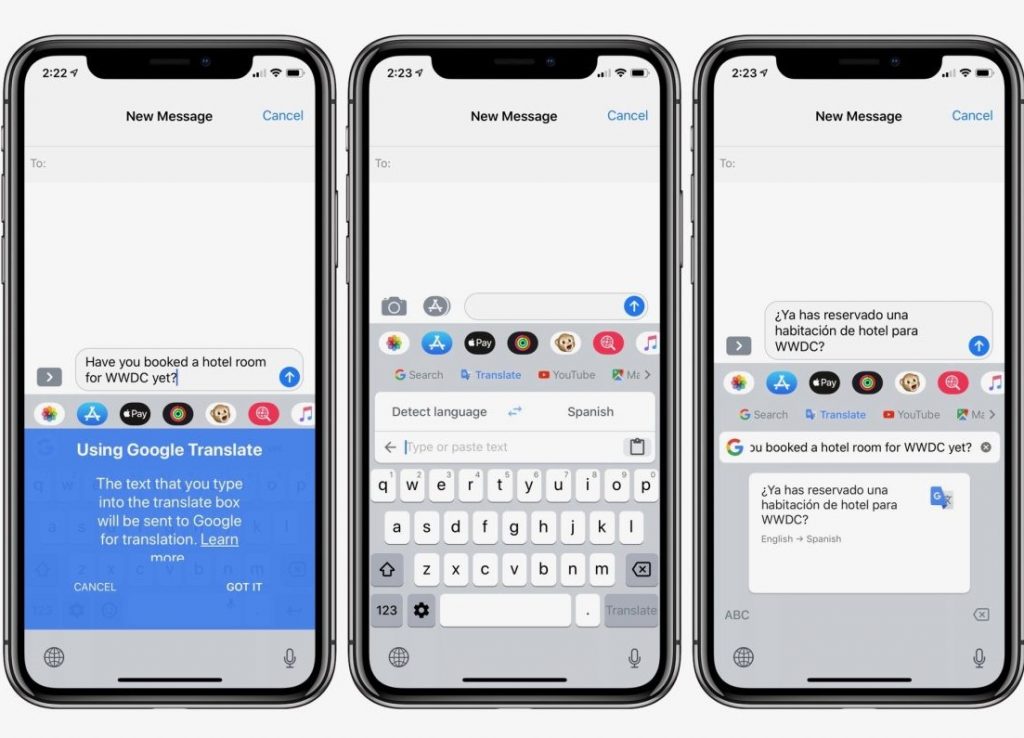
These additional features are not principal to the chat experience because there are only so many instances in a chat that require using these features. Normally, you’d just chat using plain words and iOS’ default keyboard is the best contender in that space while Google’s keyboard errs a lot.
Besides, almost every popular chat app natively supports important features that Gboard hosts within itself. For example, WhatsApp and iMessage, the biggest and the most popular chat apps natively offer stickers, which are far more intuitive than that available with Google’s keyboard. The only thing you’ll miss while using the default iOS keyboard will be GIFs. And that too, you can easily accrue from a third party app-cum-extension for iOS.
Sometimes you need to share a quick link to a new Zayn Malik music video, but it’s far from your regular function.
As for me, I use the Tenor GIF keyboard which solely acts as a GIF provider (and it’s better than Google’s GIFs). In fact, you can even edit the GIFs and create your own memes, which Gboard doesn’t offer.
Don’t get me wrong. I’m not proposing that Gboard having all these extra features is downright a slug. In fact, I hopelessly wish for Apple to include all these features into the default keyboard (which is never going to happen). But, as opportunistic extra features may seem, they bring home some caveats.
This aspect which people often deny to consider while comparing keyboards is the amount of battery life each keyboard eats up. Now, knowing that Gboard juggles with a buttload of features, it’s going to have some impact on the battery life of your iPhone. This, however, isn’t an issue with the default keyboard since it is optimized to help your iPhone last longer.
Still, as a matter of fact, if these features were really useful in daily life, I would’ve permanently switched to Gboard. Heck, I would switch to Gboard even if it fixes the dreary, frustrating typing problem it has. I wouldn’t even care about the battery then. Because iOS’ default keyboard is boring!
Gboard vs iOS Keyboard: Design
The stock iOS keyboard boasts a pretty simple design which Apple has been carrying along for years. It’s so simplistic that it has become a visual epitome for touch keyboards in smartphones.
The grey and white combo showcase simplicity, which is also sometimes boring. As a matter of fact, the reason people switch from the default keybaord and look for alternatives is that the utterly monotonous design becomes even more stodgy over time.
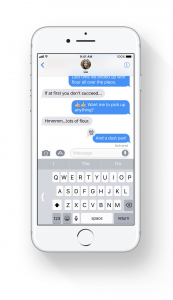
Gboard, on the other hand, has theming support. Meaning you can customize your keyboard with themes. And oh boy! Does the black theme look dope! But it is sad because iOS doesn’t put efforts/help Google put efforts complimenting the dark theme. And it is much to Apple’s chagrin for it doesn’t allow third-party apps to change aspects of the basic UI. To properly understand what I mean to say, picture this: In iMessage, the keyboard is dark and the chat screen is white. This contrast, instead of making your eyes woo, rather appears disconfigured. It just doesn’t seem right and I’m sure a lot of people will resonate with me.
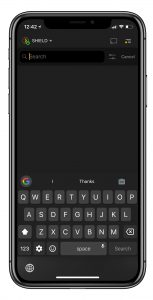
As of now, I’m waiting for iOS 13 to also introduce native dark mode so I can enjoy Gboard’s dark theme. But claims of dark mode showing up in Apple’s next iteration of its software seem dwindling already.
Until then, another important aspect to think about (to warn you: It’s unstructured thought) coming back to my original analogy, is that theming a virtual keyboard shifts your focus away from its very purpose- to type. To communicate. In short, theming helps you focus more on honing the instrument as opposed to producing music.
I’ve met people with overly themed third-party virtual keyboards living in their smartphones, having a photo of themselves or their pet as a background; which makes reading the letters on the keyboard utterly difficult.
Also, as I’ve mentioned above, Google’s keyboard’s major caveat is the lack of travel between keys, which makes typing frustratingly erroneous.
iOS’ default keyboard, in contrast, stays away from the glam that third-party keyboards use to attract downloads and focuses purely on the typing experience. It’s the epitome of what Apple does best- perform a function in the simplest way possible.
Theming: I’ve got to give it to Google. Typing: Apple it is.
Gboard vs iOS Keyboard: Language Support
Keyboards are also often ranked on the basis of the languages they support. Even though the language is the method of communication consisting of the use of words in a structured and a conventional way, not everyone in the world speaks the same.
Therefore, keyboards too have the moral responsibility to host multitudes of languages in order to appeal to people in all countries. Albeit, you can judge keyboards in terms of language using two variables:
- Number of languages it supports
- Multilingual Keyboard support
Google’s keyboard supports 500 languages while iOS’ keyboard lacks a few. But unless you demand lesser spoken languages like Sanskrit and the likes of it, you’ll never run out of languages to type in. Both keyboards offer autocorrect as well for some languages, but I doubt they’d be accurate especially since English seems tough to automatically correct for these keyboards.
Again, both keyboards also support multilingual typing. Multilingual typing means the keyboard lets you type in multiple languages without having to change the default keyboard language.
As far as language support is concerned, Gboard should be your choice since it has a wider library of languages and comparatively extensive multilingual support. Additionally, it also lets you translate to certain languages from the keyboard itself; something which the iOS default keyboard doesn’t offer.
Gboard vs iOS Keyboard: Privacy risks
This is a vague topic to touch while discussing keyboards. You may think why I would raise concerns about privacy over something so simple as just a virtual keyboard but let me tell you, it’s vaguely important. It’s not just me, however. Many fear that keyboard developers send back people’s typing data to their servers.
Therefore, as far as privacy is concerned, Google is often frowned upon due to its fraudulent past associated with sharing user data without their knowledge. And evidently, I’ve noticed many ditch Google’s keyboard for the same reason. They’d rather go with Microsoft’s SwiftKey instead risk their data with Google.
Use iOS’ default keyboard if you’re deeply concerned about your privacy online.
Although, according to Gboard’s licensing and terms of usage documentation, Google does disclaim that it acquires data from the keyboard, but only to improve word suggestions and the overall typing experience. Google also apologized for its data misuse before, assuring the debacle won’t repeat further down the road. But there’s still a stigma surrounding privacy when it comes to using products and services associated with Google. And Gboard has, unfortunately, stuck on the tyre.

People trust Apple on the other hand. Like Google, Apple also acquires typing data and uses it to improve the keyboard’s experience, but with Apple’s spotless stance on privacy, everyone, including me, is more comfortable using iOS’ default keyboard.
Either way, your privacy is utmost respected and probably won’t be prey to misuse by any of these companies, as promised by both. The verdict is, however, use iOS’ default keyboard if you are deeply concerned with your privacy online.
Gboard vs iOS Keyboard: Final Thoughts
Gboard or the default keyboard on iOS? What’s the best? Which one wins the comparison? Which one takes home the trophy?
If you look at it, Gboard earns more positive points than iOS’ default keyboard in this comparison. But as I mentioned earlier in the post, typing is what most people care about in a keyboard, and the default iOS keyboard turns out to be better in that area.
Ultimately, it certainly depends on user-to-user. If you like the additional features and don’t care about the accuracy of typing much, use Gboard. Pure, fast, and accurate typing is what you ultimately care about? Use the default iOS keyboard. Swipe typing is your game? Use Gboard. If dealing with a lot of emojis is how you literally text, use iOS’ default keyboard. Care about design? Use Gboard. If you care about privacy, definitely use the default iOS keyboard.
But, this is not how I would like to end this comparison. I’m not gonna keep you guys hanging to decide on yourselves after writing more than 2000 words of purely conclusive aspects of why each keyboard is better or worse than the other. This is not any other blog. I’m gonna come outright and say if I were on iOS (which I am) and if I had to choose between Google’s feature-rich keyboard and Apple’s simplistic default iOS keyboard, I would choose the latter. And I would advise you to do the same as well. It just works for me, and almost everyone I know that uses iPhones.
Ultimately, at the end of the day, however, it’s your choice. Whatever works for you.
